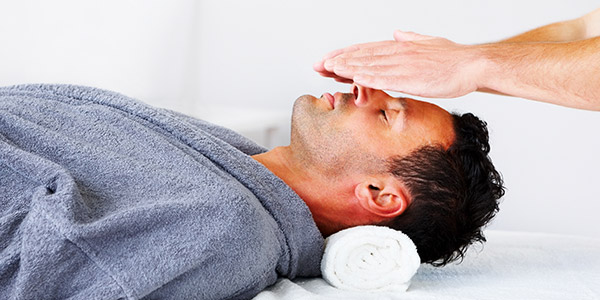 Creative or expressive therapies help you to access buried emotions and express them safely and constructively. These types of therapies work when they are noncompetitive and participants' creations are not judged. Such therapy programs are usually run by therapists certified in art, dance, drama, music, or writing. However, you will find that many of these therapies are possible to do at home on your own.
Creative or expressive therapies help you to access buried emotions and express them safely and constructively. These types of therapies work when they are noncompetitive and participants' creations are not judged. Such therapy programs are usually run by therapists certified in art, dance, drama, music, or writing. However, you will find that many of these therapies are possible to do at home on your own.
Art Therapy
Releasing feelings and emotions through art helps you to work through inner conflicts and enhances your self-esteem. Try picking up some soft lead pencils and then begin drawing each morning before work.
Dance or Movement Therapy
Dance therapy provides self expression and helps to release repressed feelings. Natural dancers experience improved moods after dancing. Types of movement therapy include tai-chi or aikido. These techniques have been proven to be helpful for developing a better sense of self-control.
Drama Therapy
Drama therapy is similar to and uses similar processes of drama and theater. This type of therapy helps to express emotions appropriately and also helps to promote personal growth. Examples of drama therapy involves techniques such as role-playing and theatrical production.
Music Therapy
Music has been used as a therapeutic tool for centuries. Music seems to release natural chemicals such as endorphin and opiates, which soothe your mind. The use of music therapy is common outside of the United States. It has proven helpful for treating depression, grief, stress, schizophrenia, and even childhood autism.
Writing Therapy
Two examples of writing therapy include poetry writing and journaling. Both are powerful ways to express feelings and gain new insights. Martha Francis and James Pennebaker introduced therapeutic writing in 1992 and found it can help reduce all types of health problems.
A Typical Therapeutic Writing Session:
Prepare to Write
– Set aside 30 minutes a day to write and make sure to choose a place where you won't be disturbed.
– Get some paper and a pen or pencil. Personally, I prefer using the computer.
– Before beginning, take some time to get relaxed.
– Begin by writing your thoughts and associations as they occur. Don't worry about spelling or grammar, just write!
– Concentrate on expressing your deepest emotions.
– If depressed, you may want to write about your painful feelings rather than when the events happened.
– Once you've written for 30 minutes or so, set your work aside.
– You don't have to share your work with anyone else, unless you want to.
– Have a writing session everyday for at least a week.
Tips for Overcoming Writer's Block
– Write about a memory, even if it was from yesterday.
– Write about what is feels like to have writer's block.
– Describe the room you are in or what your listening to.
– After a few minutes of writing… start to write about feelings that may have surfaced by bringing up these topics.
Therapeutic writing expresses your feelings, it's not about writing itself.
There are many ways to express your emotions and feelings effectively and productively. I hope the few ways I've shared with you will be helpful and therapeutical.

 Herbal therapies have been used for thousands of years by people from every corner of the planet. Based on the way that the human body responds, herbal treatments have been divided into eight basic methods of treatment. The eight methods of herbal therapy are as follows:
Herbal therapies have been used for thousands of years by people from every corner of the planet. Based on the way that the human body responds, herbal treatments have been divided into eight basic methods of treatment. The eight methods of herbal therapy are as follows:

 Grief is most often associated with death of a loved one, even that of a beloved pet, but the emotion might arise from disappointments over health, relationships or career, as well. Separation from people who are close to you, or losses within your immediate circle, can trigger distress and sorrow. While there is not quick cure that mend a broken heart, herbs, aromatherapy, relaxation techniques and homeopathic remedies can help the grief stricken through the difficult bereavement process.
Grief is most often associated with death of a loved one, even that of a beloved pet, but the emotion might arise from disappointments over health, relationships or career, as well. Separation from people who are close to you, or losses within your immediate circle, can trigger distress and sorrow. While there is not quick cure that mend a broken heart, herbs, aromatherapy, relaxation techniques and homeopathic remedies can help the grief stricken through the difficult bereavement process.